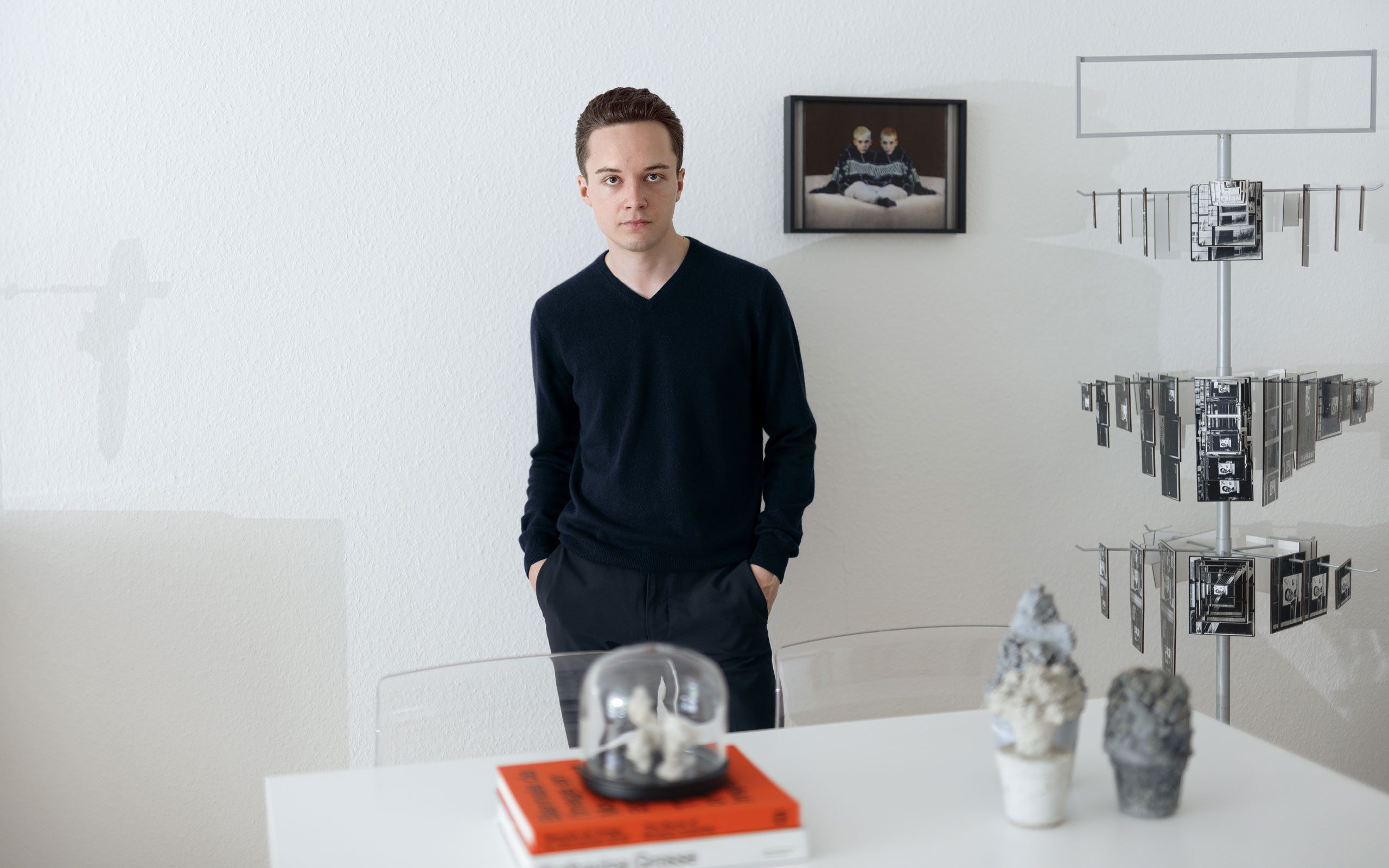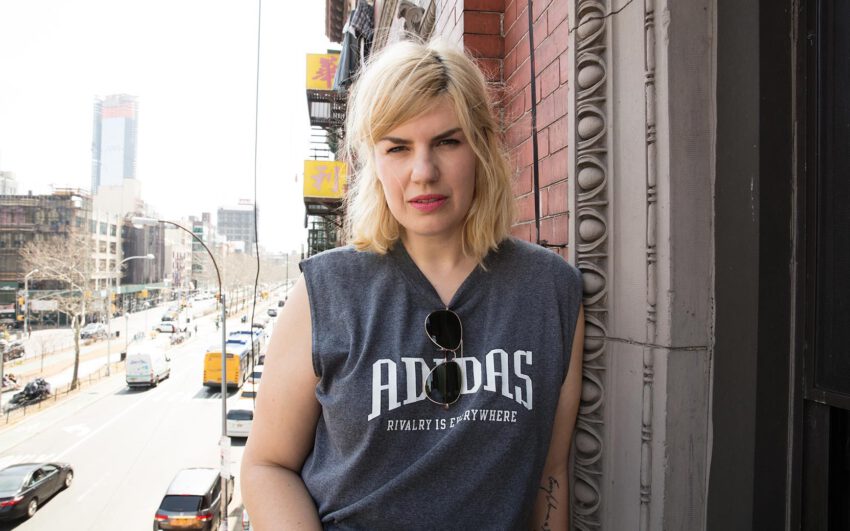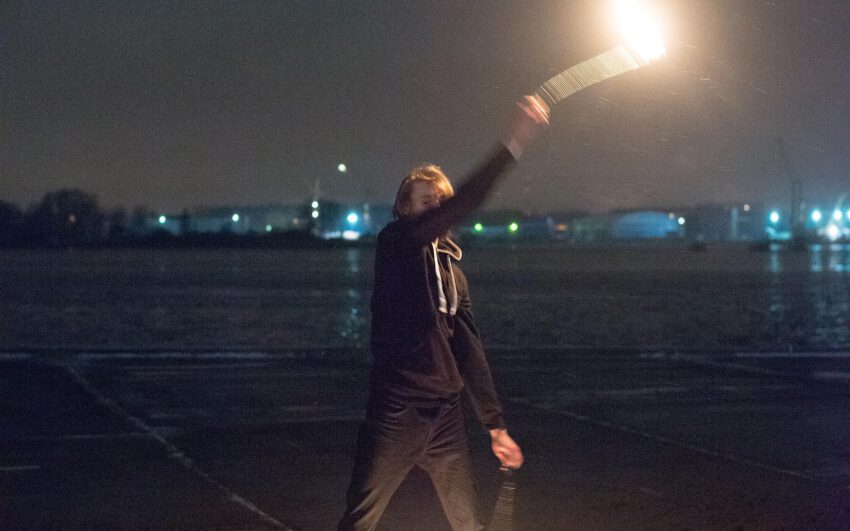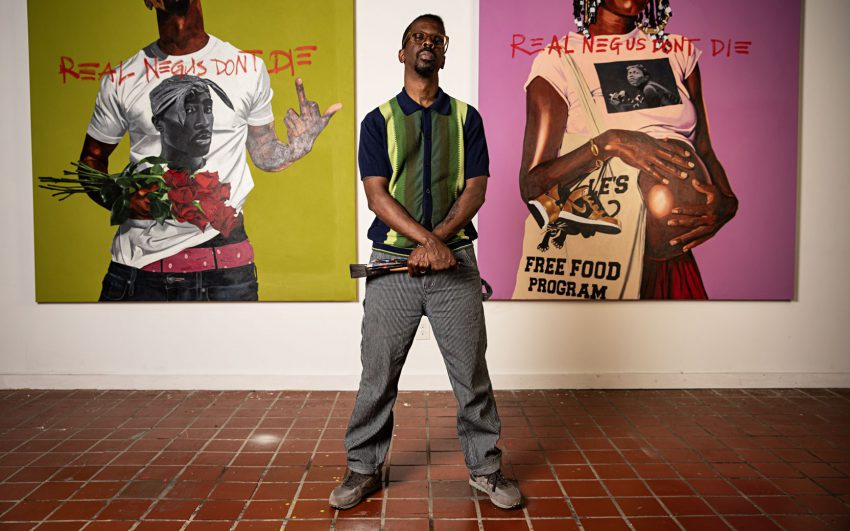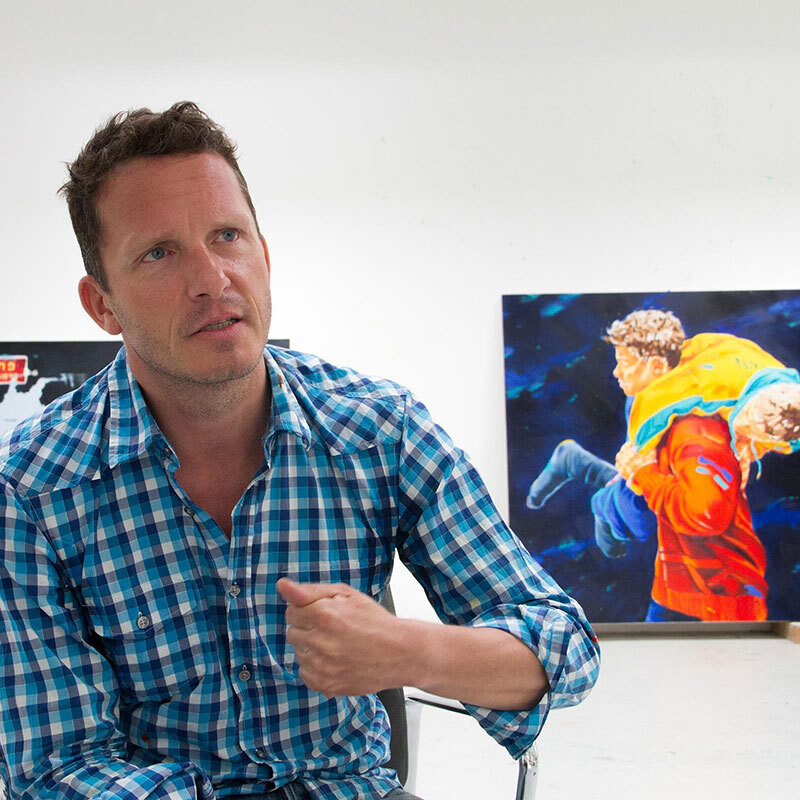This collector story is in collaboration with Artscapy. Their Art Account provides 5,000 collectors with a complete set of services from collection management to valuations, insurance and advisory.

Lukas Jakob started his private collection of Contemporary Art in 2016 by buying a tie by Katharina Grosse. His last acquisitions, however, are incomparably larger: he now concentrates on expansive installations. His residence in the tri-border area between Germany, Switzerland and France gives him a regional and international outlook on art; art fairs such as Art Basel are fixtures on his program. The collector sees himself rather as a patron than as the owner of his works; the continuous exchange with artists is at the heart of his collection.
Lukas, how did you get into art – do you come from an art-loving family?
Not at all, I found my own path. The fact that I grew up in the tri-border region, which offers a culturally rich environment between Germany, France and Switzerland – and especially Art Basel – certainly played a role. In addition, early on, I had a strong connection to the E-Werk Freiburg, a local socio-cultural center. This former power station is home to inspiring exhibitions, dance, music, theatre and studios.
Which artist in particular infected you with the “art virus”?
That was Katharina Grosse. The way she deals with painting was so exciting and new to me, I found it radical and fantastic. And so I bought what I could afford with my first salary: a spray-painted tie. Today it forms the basis of my collection and is being displayed as an object in a specially made box.
What happened after Katharina Grosse?
At first, I was interested in the Berlin female artists around Grosse, then I worked my way through the art scene in the border triangle, and in recent years I have turned to the concept of installation. I think these are the three pillars in the history of my collection.
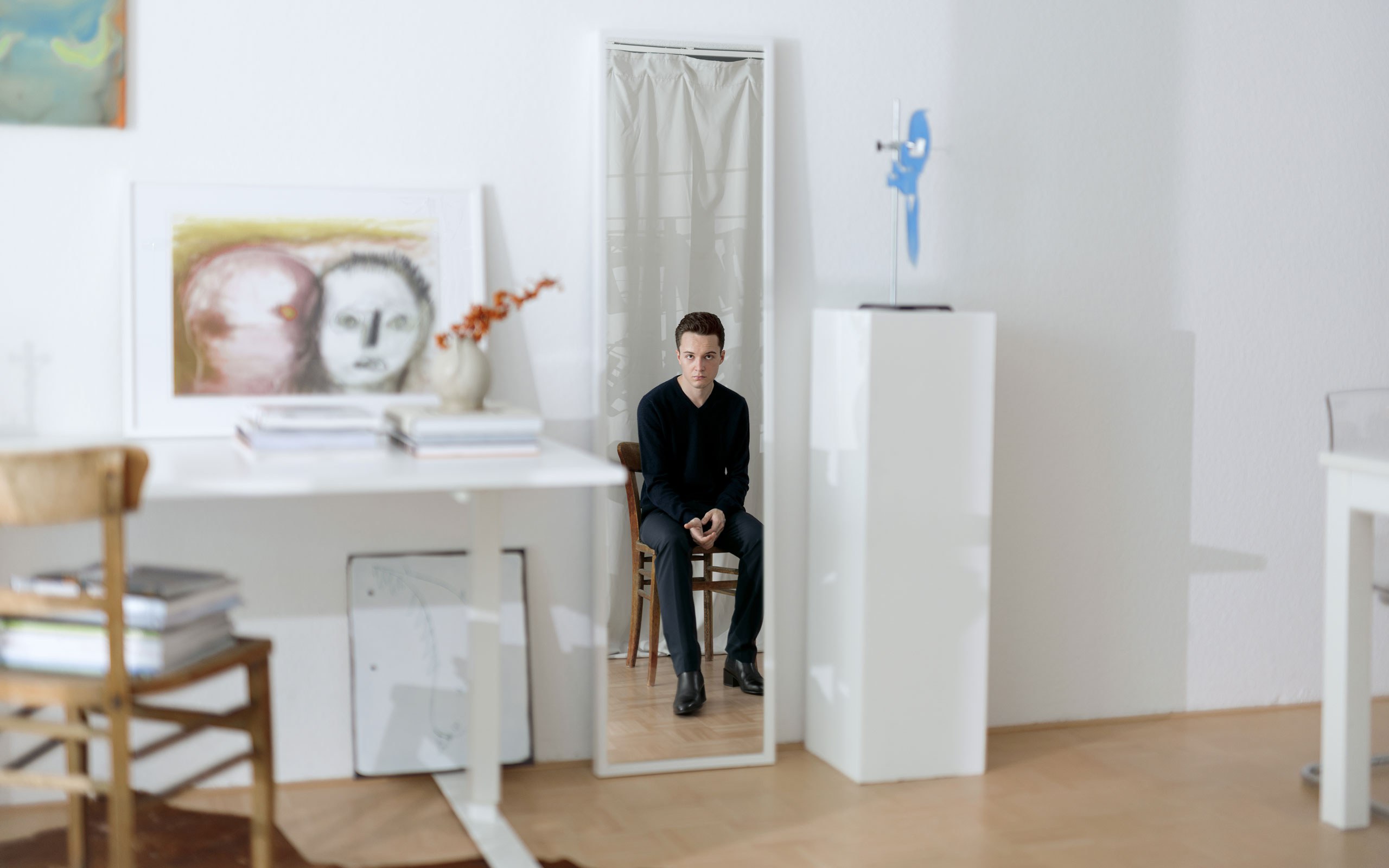
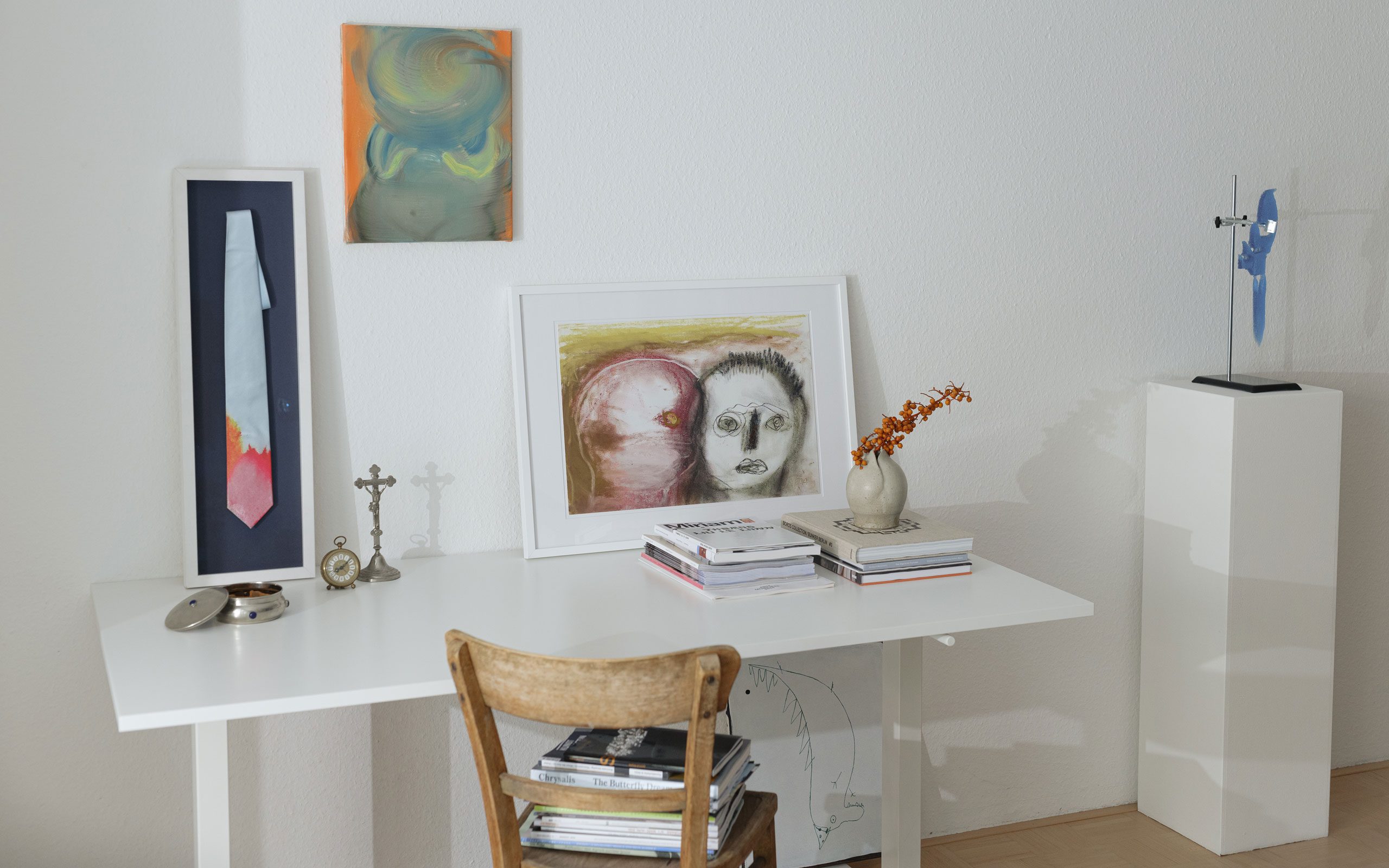
What interests you about these large installations that are often difficult to exhibit?
Now: How does it affect me if I buy a work that I can’t live with on a daily basis? For example, I bought a seven-meter-long soft hero by Thomas Liu Le Lann, just because it fascinated me. It has no muscles, is limp and seems to have given up on the world around him. He is wearing a harlequin mask, and you don’t really know whether he’s on his way to a fetish party or to the next bank robbery. I am glad that this gentle giant will be by my side for a long time. I simply have to have work that irritates me: I don’t ask myself whether it makes sense.
What does a work of art have to have to grab you?
For me, it’s about incomprehension: I find works particularly exciting that are not immediately accessible to me, that I cannot grasp. Like the work of Gabriella Torres-Ferrer, for example. I found her floating cloud installation made of rescue blankets, which reacts to visitors via sound fragments with motion detectors, very strange at first; it’s about power dynamics, social profiling and various observations in the wake of Hurricane Maria in Puerto Rico. Through these different issues that artists work on, I can access completely new worlds. I am convinced that artists, through their works which often address important themes of the present, contribute to a progressive society.
Speaking of installations: How important is it to show these large works?
When one buys such major works, one has the responsibility to show them. Therefore I am looking for different types of presentation. The Jakob Collection has already been shown in a former butcher’s shop, in an empty chapel, in an electricity station...
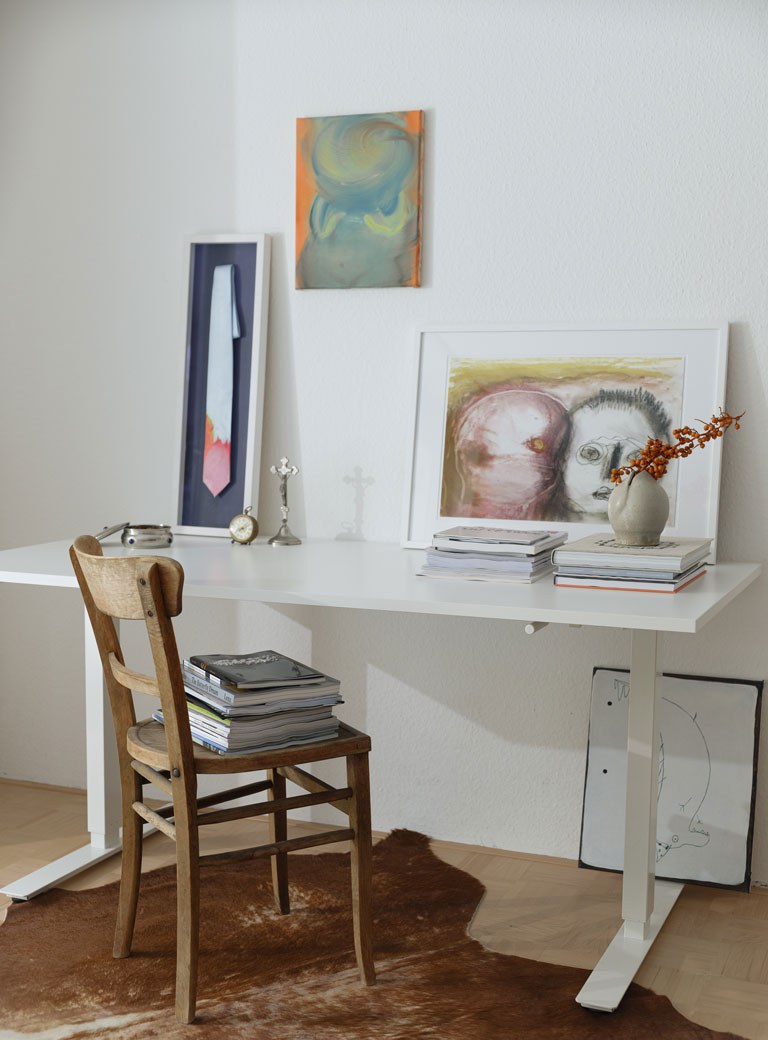
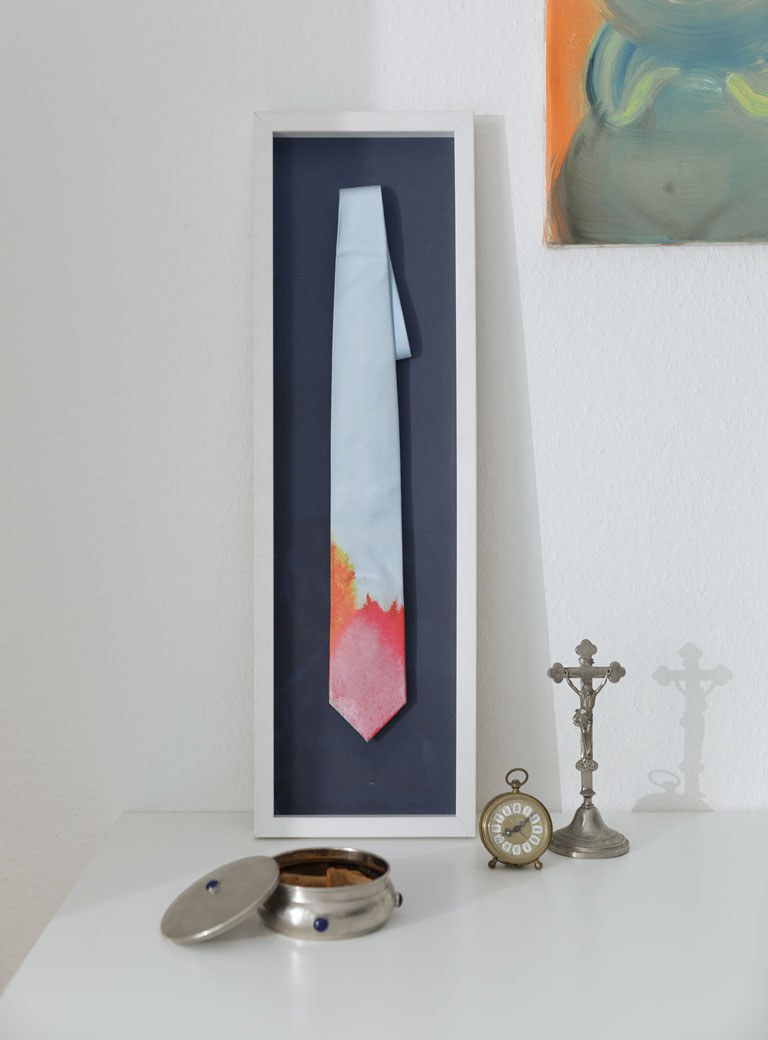
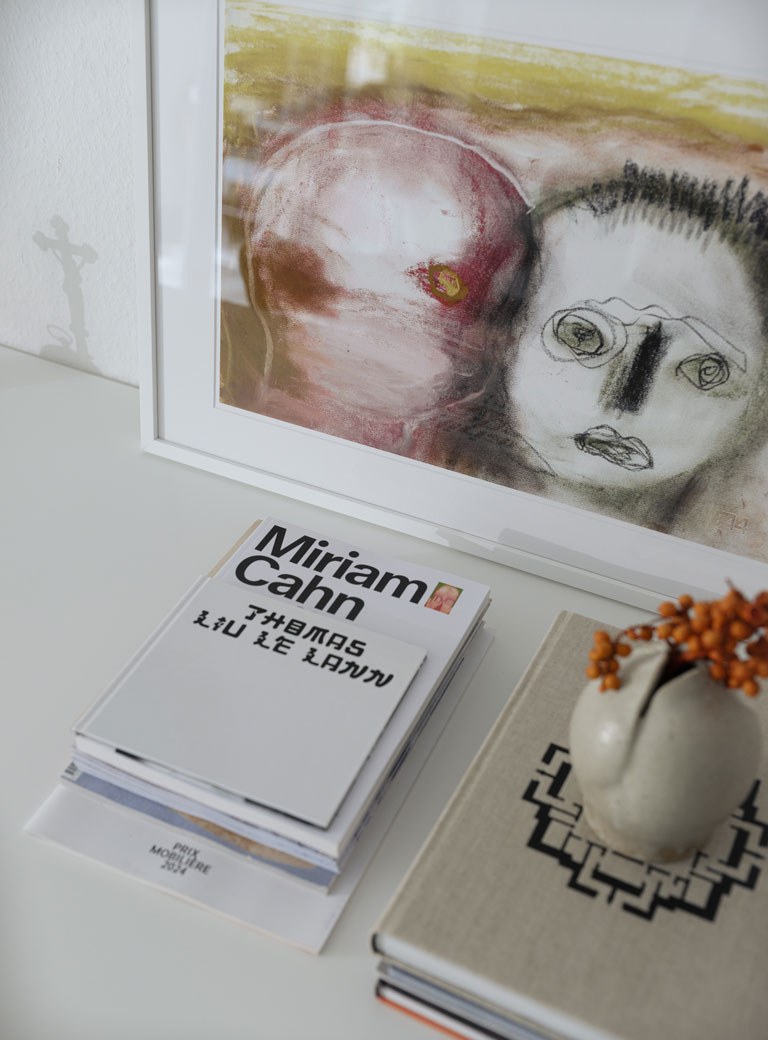
Are you more of a hunter or a gatherer? What do you think is the best thing about buying art?
I like the poetic idea of being the patron of a work rather than the owner. I don’t think the works ever really belong to me, especially the kind of installation work that I buy. Maybe that’s why I’m buying it, so that I can think again with the artists about how to install it (laughs). It’s about exchange; ownership is not so important. There are great collectors in this regard that I look up to.
Who, for example?
Karen and Christian Boros, the Hoffmann Collection, the Grässlin Collection, Julia Stoschek. I hold Jocelyne and Fabrice Petignat in high esteem, a Genevan duo of mother and son, who combine enviable expertise with unconditional commitment.
What do you do differently as a collector of the new generation?
I think that I communicate the collection differently. I don’t shy away from using social media to make the collection digitally accessible.
Social media is a double-edged sword for the arts, if you look at the oversupply on Instagram, for example. How do you feel about that?
Social media is a very useful tool for networking. But also a great danger for artists, because many works of art get lost in the algorithm. On the other hand, we had the experience that the video of an installation from my collection presentation in Berlin went viral with several million views. As a result, a well-known hardware store contacted the artist, as they wanted to use the video for an advertisement. So this is possible, too!
How many works do you own? And by how many artists?
Around 100 works; by currently 47 artists.
Which means you like to buy in depth?
Yes. Because through my collection, I try to work out the question: What is my generation’s DNA?
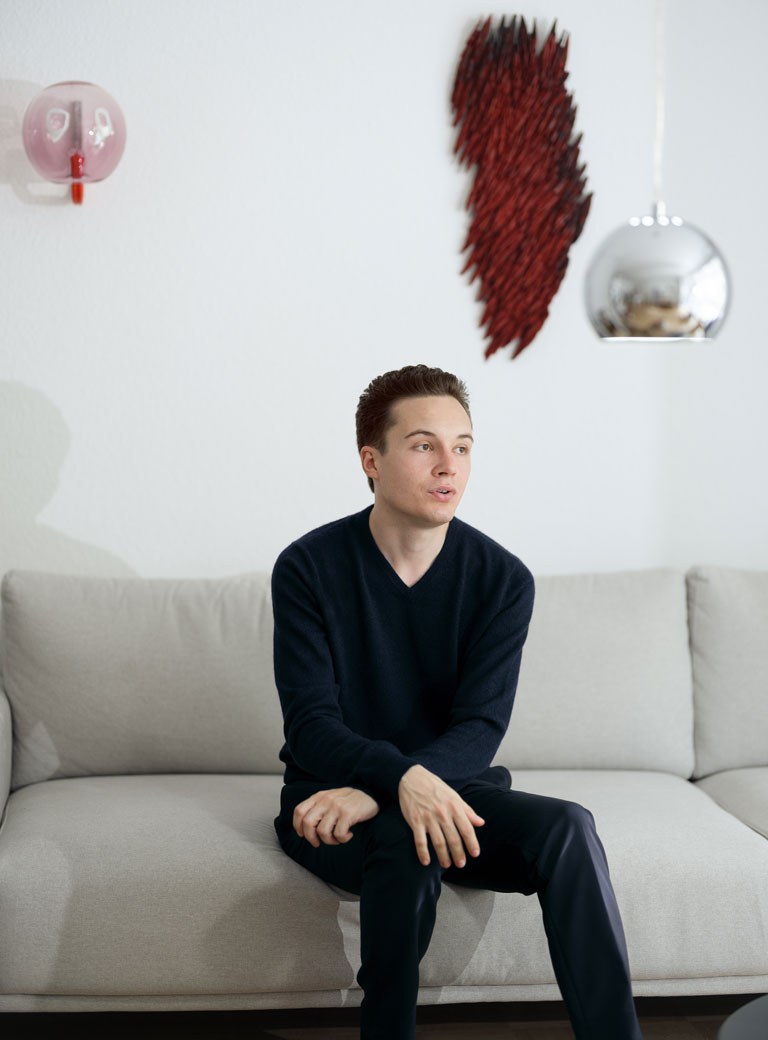
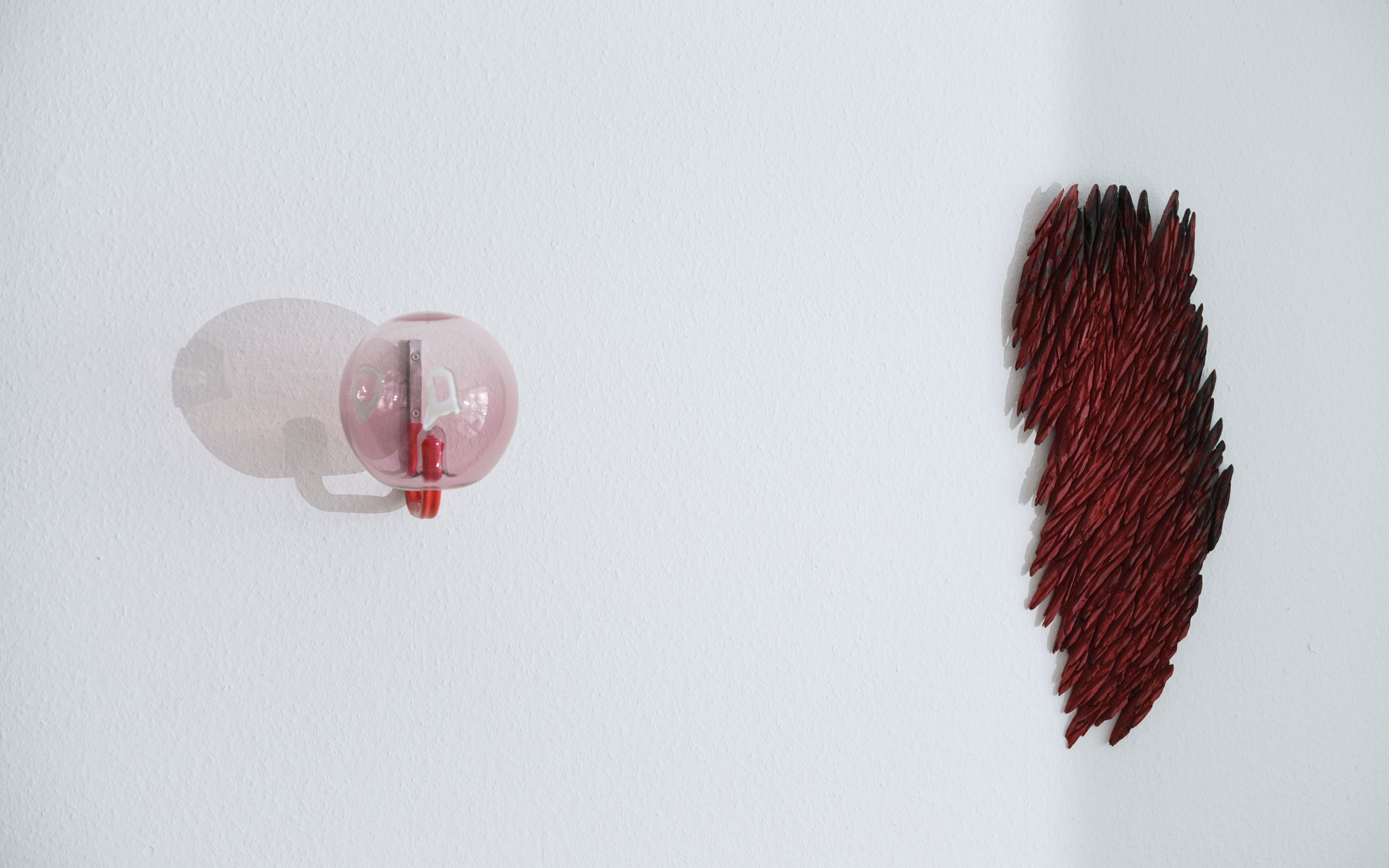
You were born in 1998; are there even artists of your generation yet?
Yes, for example at the LISTE in Basel. But the big questions of our time also drive other generations, with a different perspective.
What are the big questions, you think?
Social interaction and the culture of protest are what drives us right now. How are political issues being discussed in the media outlets? Inclusion, #Metoo and similar movements, the climate crisis, wars, gender... This is where artists, galleries and fair formats can position themselves.
It is exciting that these topics are already being dealt with now, almost at the moment of their emergence. Shouldn’t art reflect? Is that even possible in such a short time?
It’s fast. I buy works that have just been created and deal with the changes of the last year.
What, for example?
The depressive superhero by Thomas Liu Le Lann, an icon for our insecure times, or the works of Gabriella Torres-Ferrer, which often deflate in the course of exhibitions. Or Jasmine Gregory, whom I discovered at the last LISTE in Basel. She mixes Swiss financial aristocracy with trash TV, for example by using packaging from high fashion brands such as a Hermès shoe box. A work of hers in my collection is titled with a phrase that could have come from the Housewives of Beverly Hills: Better Than Botox. It’s a beautifully arranged bunch (laughs) and you ask yourself: what does this luxury sector offer us? Jasmine Gregory questions the commercial value of a work of art. I keep discovering different contemporary influences, observing differences between Switzerland and southern Germany, but also similarities in a globalized context.
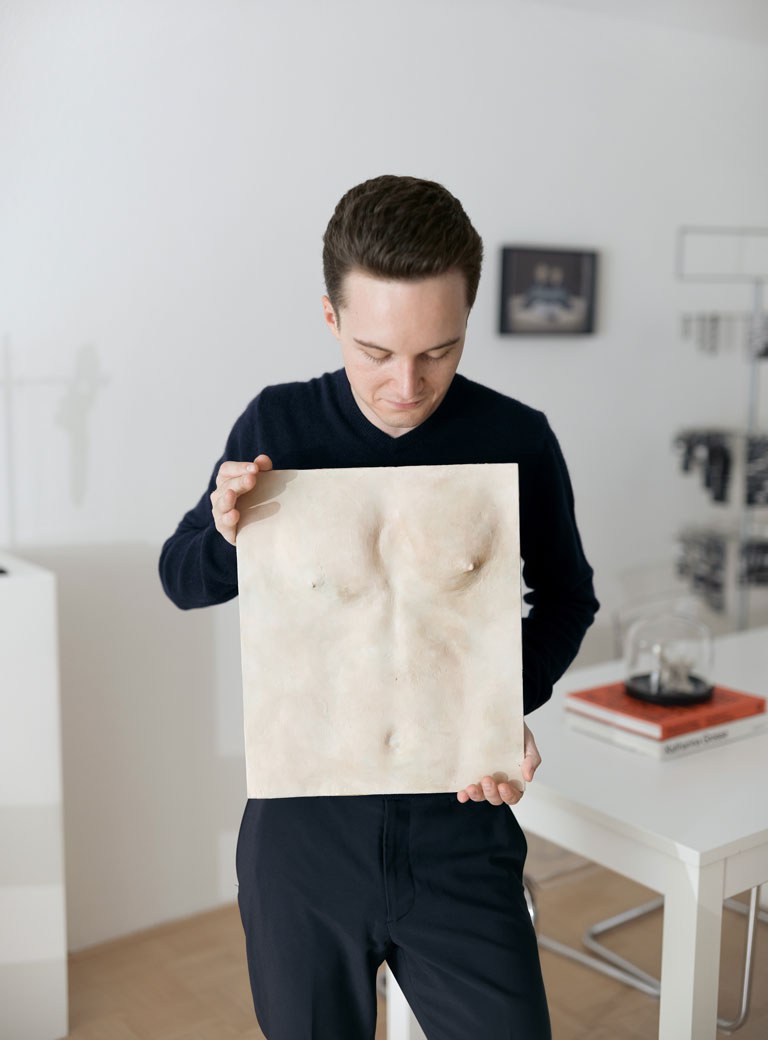
The Hermès box reminds me of works by Sophie Fleury. These are probably positions that are connected to each other. How well do you have to know your history of art to be a collector?
Especially when buying contemporary works, it is important to be aware of the references. I appreciate works that are steeped in those. Sylvie Fleury has had a strong influence on Geneva’s young art scene. One should not only delve into the new works, but also ask oneself: “What was there before?” and how a work relates to the historical context. I am thinking of Jaime Welsh, who references Dutch masters and avant-garde films in his heavily edited photographs, or Aneta Kajzer who quotes Miriam Cahn in her unconventional portraits.
So how do you educate yourself?
I look around, I get involved in art associations and attend lectures. I am interested in research-based artistic practice. But I also got in touch with the regional sculpture scene in the Black Forest early on and learned a lot through the exchange between the generations. Because experienced sculptors in the countryside can teach you a lot, too.
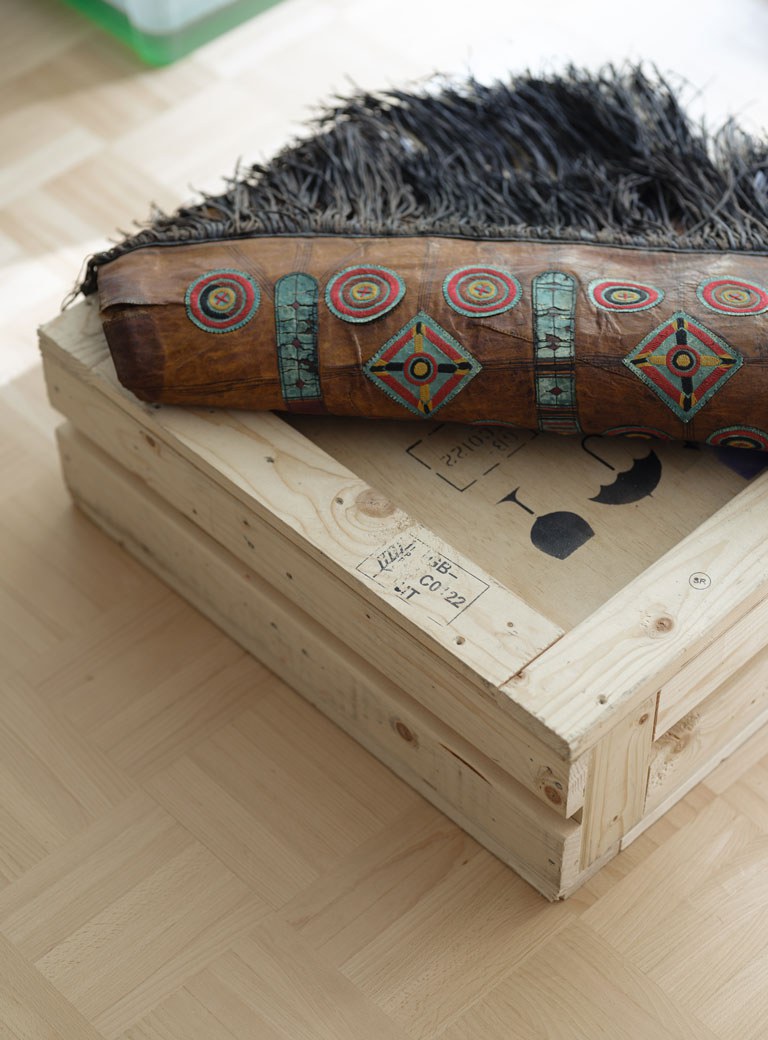
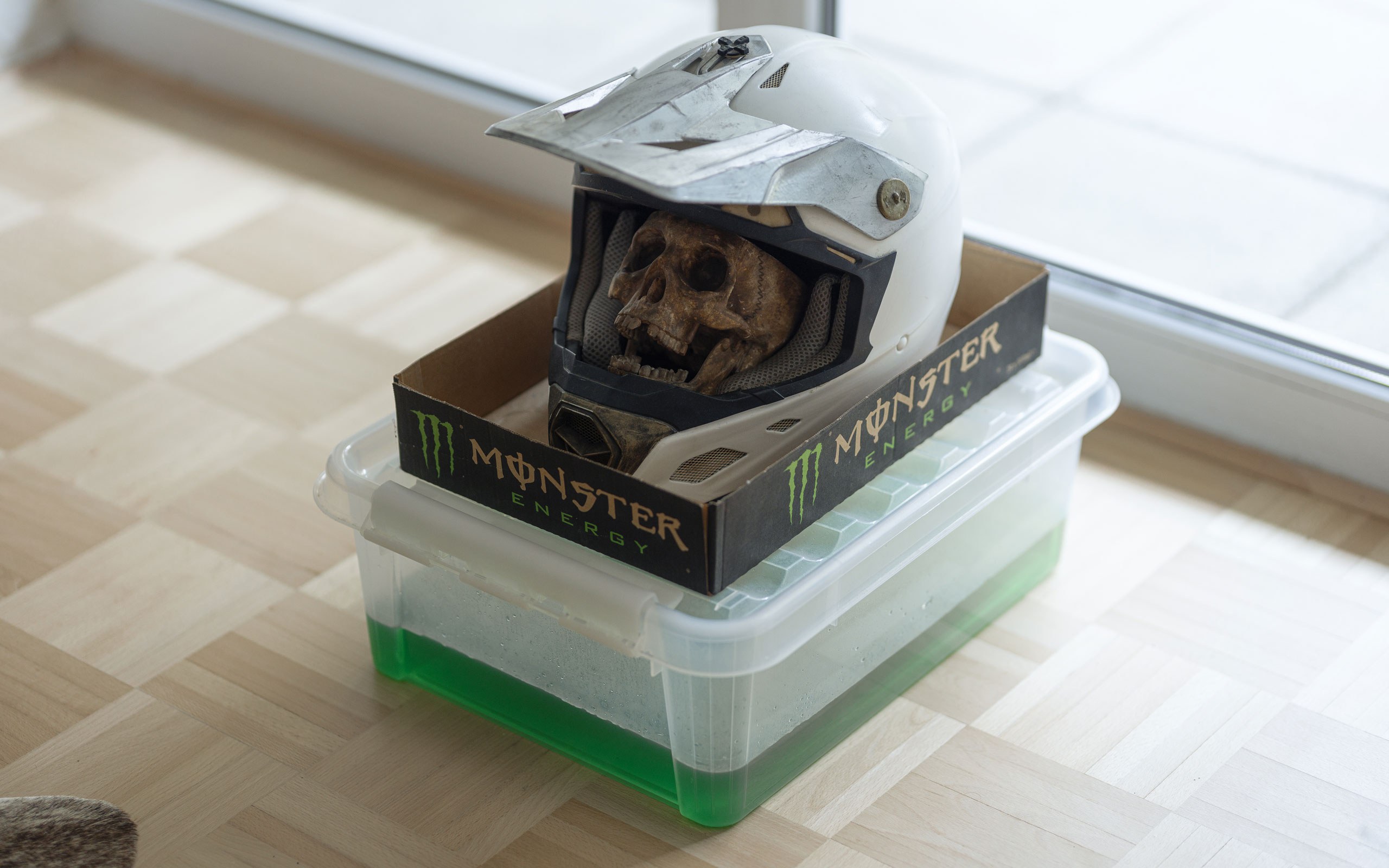
Do you do a lot of research on artists you are interested in?
Of course! You have to read interviews with the artists, have to have conversations with them. The exchange with gallery owners is also important: I want to know what interested them in the work in the first place, or where they see a particular work in my collection. I want to think and move with them. And I like long texts, books that you have to work through.
You’re one of the few!
I love those moments when something clicks (laughs). Especially when I go for a work that didn’t speak to me before... And I also notice this moment of awakening in the eyes of visitors to my collection when I talk about the works. Not that I understand every work, because I believe that some things can never be fully understood, but just the knowledge that the work is rich in associations fascinates me.
Even the unforeseen?
Yes! It’s almost even more exciting when something has gone wrong, during transport or installation. These are the stories that everyone wants to hear (laughs)!
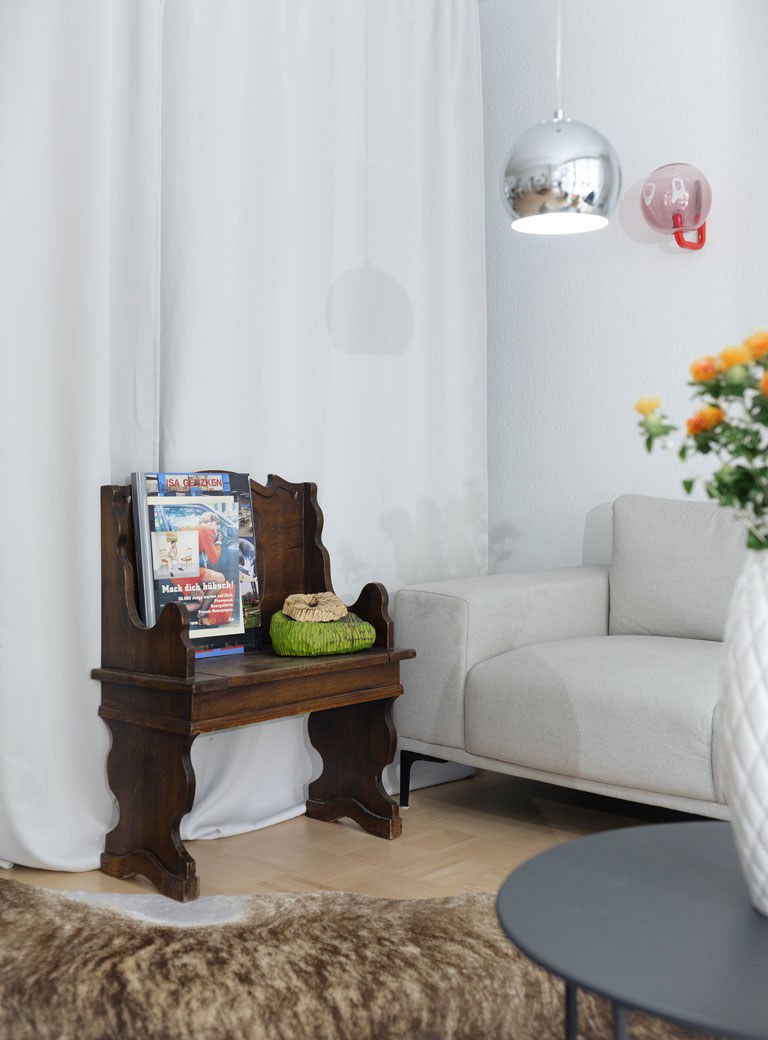
How much time do you have for anything else besides art? Or do your friends move in the art circle as well?
My friends have joined me on board the art ship I’m on. Art has influenced my private life a lot, also my love. At some point, I have decided to give art this important place in my life. Theatre, music, pop culture, culinary delights are also interesting, but art comes first. I can’t think of anything better than spending every free second in exhibitions.
They say that the collector always collects himself – what do you think about that?
Maybe it’s true... Yes, there is a connection to myself in every work in my collection. You look to the works of art for answers to the questions that concern you in life. To understand what is happening in society.
Art answers to questions – or asks questions. What is art better suited for?
Art is allowed to be free, independent of everything. The fact that it is allowed to ask questions about anything, that the works are open, that’s what I find most exciting. As soon as you have to explain yourself too much, it’s not good.
How do you buy and where?
I visit a lot of art fairs, especially the fairs of the Swiss Art Summer or Art Basel, they are important platforms. I also visit galleries in Berlin or Paris, those are my marketplaces. I buy in galleries, and studio visits are important to start a conversation. I’m not someone who buys at auctions.
Have you ever felt intimidated by the art bubble or a visit to a gallery at first?
No. But the galleries here in southern Germany are so likeable, that can’t happen. Here in Freiburg, people know each other. And Art Basel... For me, this is the best time of the year. People have never not been nice.
Art Basel brings together many international galleries. Is it important to you that your collection includes international artists?
Yes, because it is part of the internationally networking art world. But the contact with the artists also happens from here. Through my visits to the artists in residence at the E-Werk Freiburg, I got to know exciting people from abroad, such as the Taiwanese artist Steph Huang. But it also gives me great pleasure to guide them through the city.
Contact with artists seems to be very important to you?
Very much so! When I decide on a work, that means contact! Thinking about the works together, how the installations are structured, in what context they are placed. That’s perhaps another selection criterion for why I wouldn’t initially collect someone who comes from far away: because the exchange is so important to me.
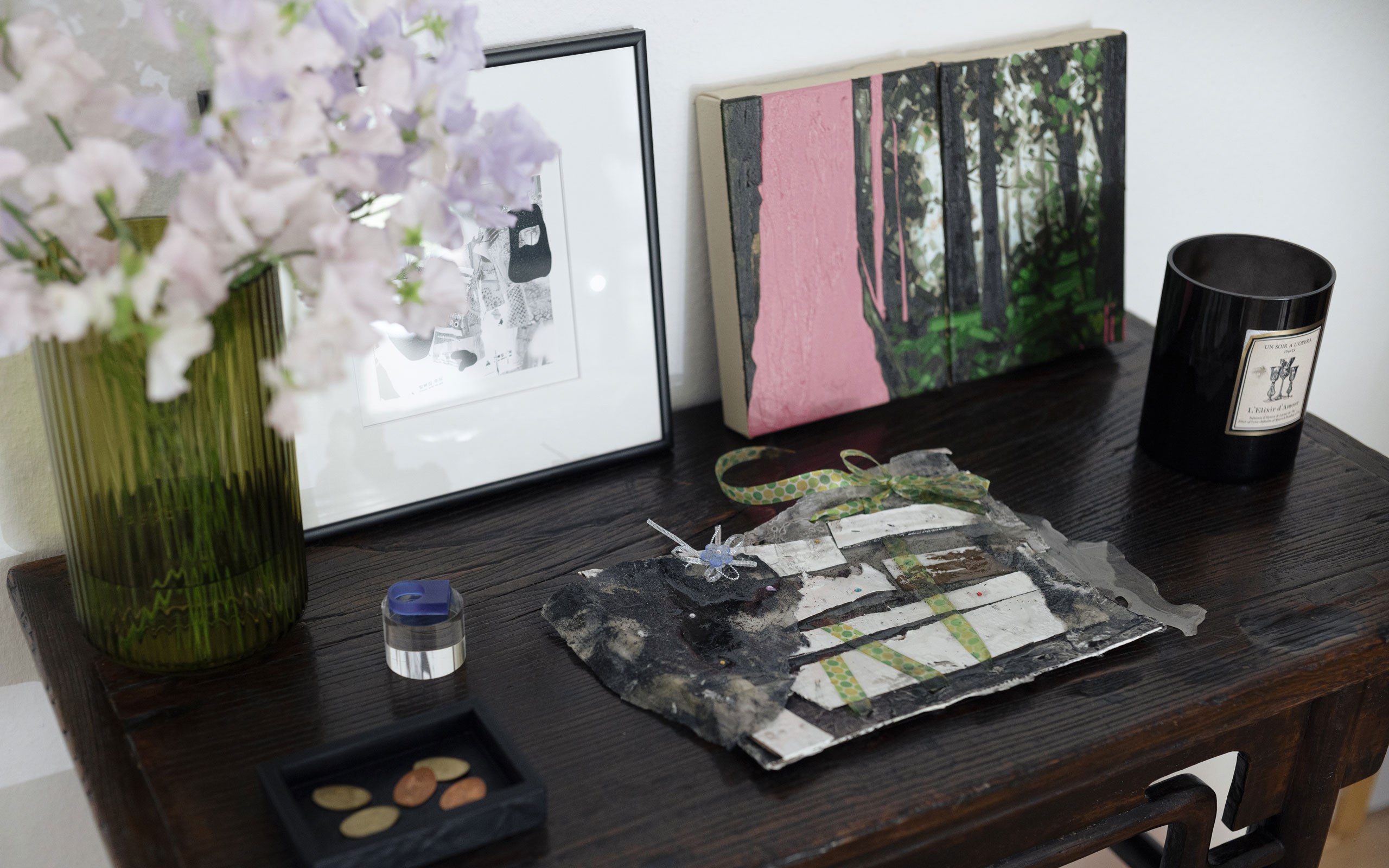
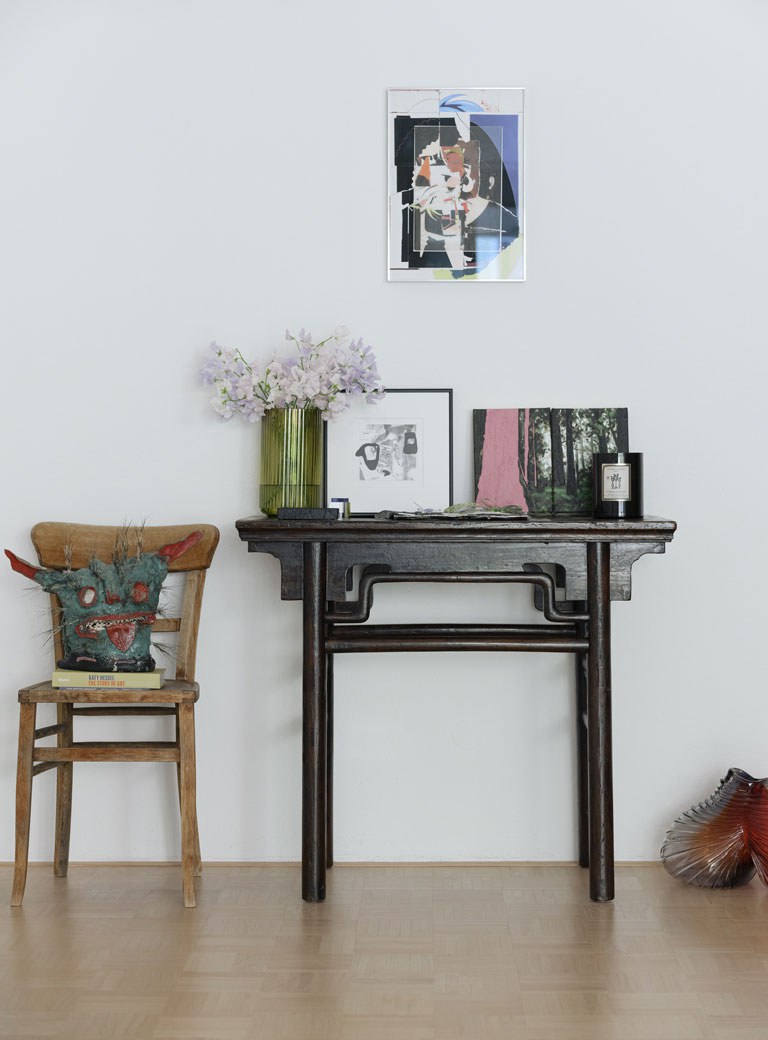
You are slowly building up your collection; it doesn’t sound like you’re looking for the latest investment and then quickly throwing the work back on the market...
I think some of the installations I’ve bought are so challenging to present that no private person would buy them from me (laughs). For example, this cordless sledgehammer by Evgenij Gottfried, which hammers wildly through the room, is life-threatening!
What do you think your collection says about you?
I think it’s the open gaze of someone who grew up in the tri-border region. I want to see the world through the eyes of artists. This includes their view on the past, the future, the profession, the art market and the various areas of life. Supporting artists is my top priority. The furnishings in my Freiburg apartment – a contemporary interpretation of a Black Forest parlor – are a conglomeration of found objects from the region. Here, traditional craftsmanship meets Genevan ceramics and the modern design culture of north-western Switzerland.
Do you have advice for someone building a collection?
I would have liked a guide at the beginning, that could have helped me with the challenges of exhibiting work you have bought – especially work from young artists. I prepare every presentation together with them, but for an artist, selling a work also means handing it over and sometimes not being able to decide which other positions it is shown together with. That was a learning process for me: even if I have bought a work, I have to stay in touch. Art is beautiful, but it takes a lot of work (laughs).
Are there any works of art in your collection that you no longer appreciate so much?
Yes; they also exist, but I wouldn’t sell them because they meant something to me at a certain moment. I always think long and hard about whether to buy a work or not... But there are items in my collection that I think are more relevant and some that are less so.
Have you ever sold anything?
Once. But before that, there were arguments, and then I didn’t want to live with work anymore. I’d rather say I had to part with it (laughs).
Do you always sleep on it before buying?
I never buy straight away. I prepare myself well. If I see something at the preview at an art fair and I know that the next group of people will arrive in three hours, then I look for a quiet corner and start intensive research on my laptop. I really prepare myself for a fair, an exhibition or a Gallery Weekend. And I have a watchlist of galleries that I find exciting. But I also rely on the expertise of the gallery owners.
Do you have a budget?
Yes. I know that I have this collector’s disease. The budget is not infinite.
You finance everything yourself?
Naturally. Everything is bought privately, with my own money, there is no company behind it, nothing is sold.
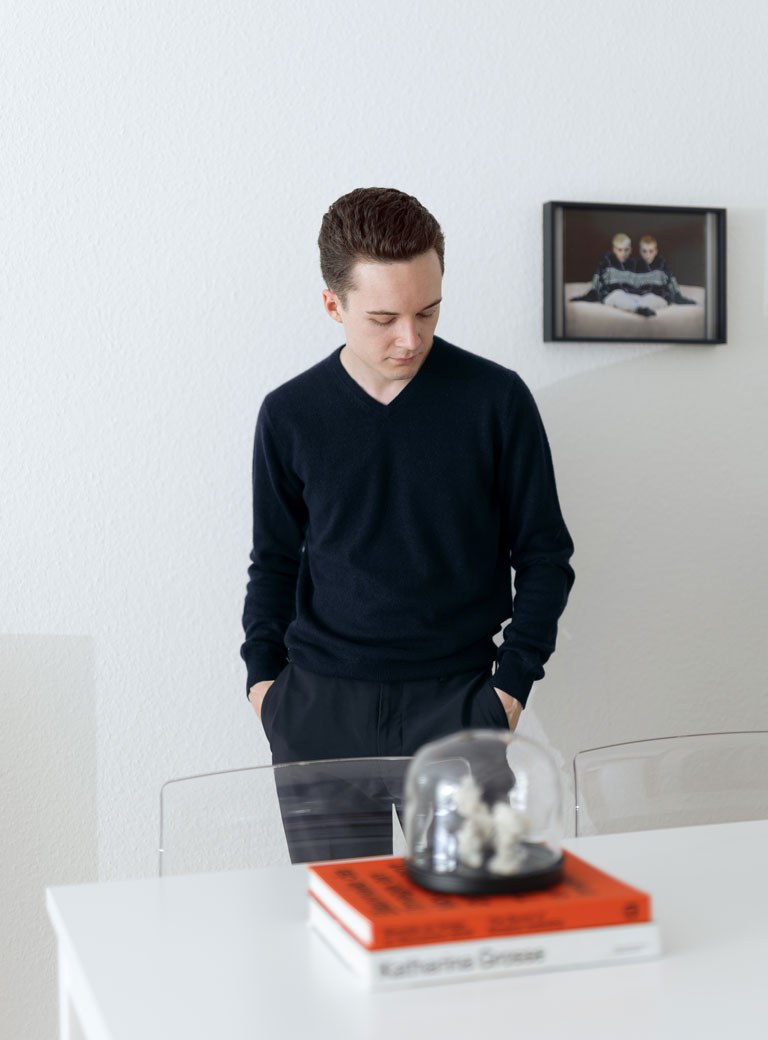
Your collection is now very extensive – how do you actually manage the works and document their provenance? Do you do this digitally via a website or app (which can even record increases in value) or do you have your own method?
For the collection, I use the same system that I learned in the town hall for filing and managing files. It is a simple and proven filing system with digital folders. Each new acquisition is also recorded in a portfolio that is made available to the museums that make loan requests.
If you had the choice of all the artworks in the world and could choose one for the collection, what would it be?
Oh dear (laughs). What I’ve been thinking about for a long time is to buy a work by the artist Phung-Tien Phan. There is this fantastic aesthetic boredom and dullness in her work that I know from public administration (laughs).
Interview: Alexandra Markl
Photos: Johannes Baudrexel
Links:


